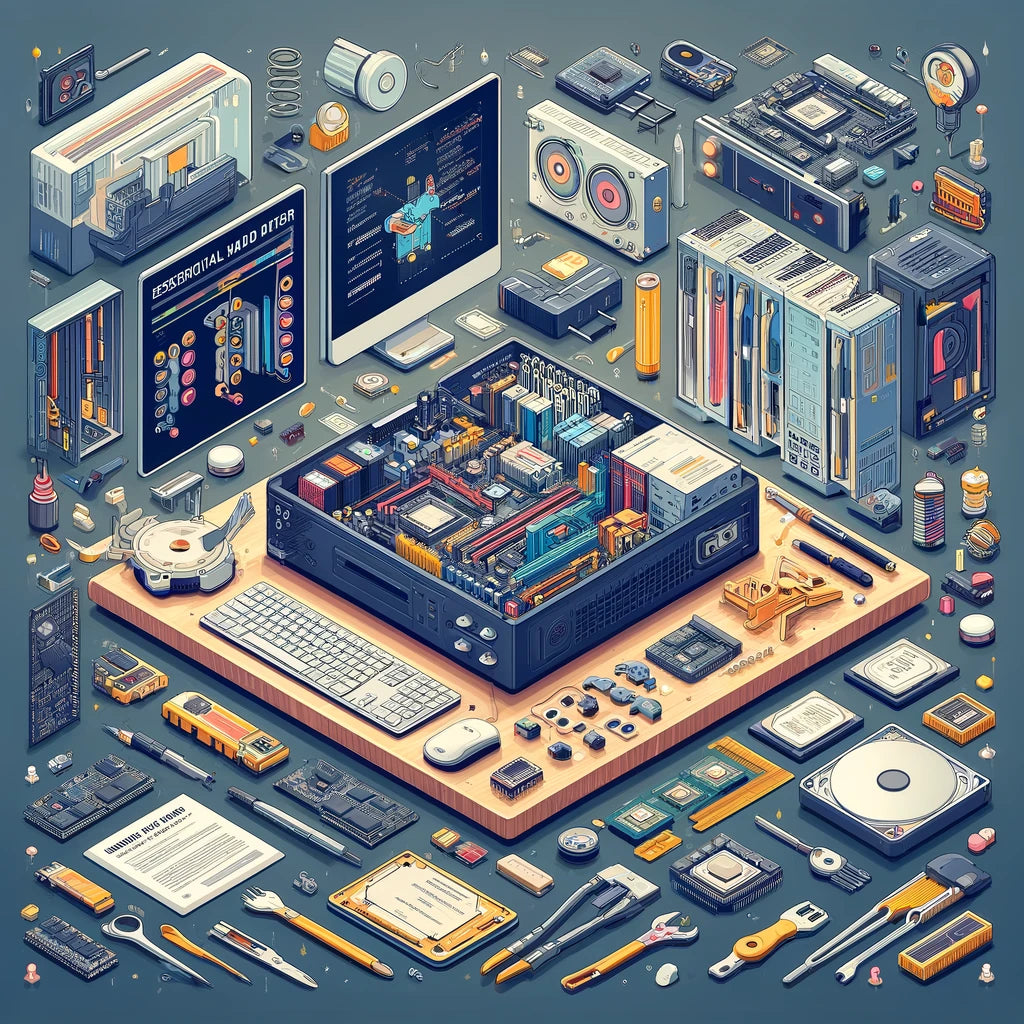| Main Points | Details |
|---|---|
| Server Chassis | A spacious case ensures good airflow and room for expansion. |
| Motherboard | Choose one that supports the necessary CPU, RAM, and expansion slots for your needs. |
| Processor (CPU) | Depends on the server's purpose; more cores are beneficial for multitasking and heavy applications. |
| Memory (RAM) | Essential for multitasking; 8GB is a minimal starting point, with more required for demanding tasks. |
| Storage | SSDs for the operating system and applications, HDDs for mass storage. The amount depends on the server's use. |
| Power Supply Unit (PSU) | Choose one with enough power for all components and future upgrades. Efficiency is key for 24/7 operation. |
| Cooling System | Good airflow and additional cooling solutions prevent overheating, ensuring reliability and longevity. |
| Networking Components | A reliable network card and possibly additional networking hardware for more complex networks. |
| Backup Solutions | Consider UPS for power outages and RAID setup for data redundancy. |
Building Your Home Server: Essential Hardware Explained
Creating a home server can be an exciting project, whether it's for learning, hosting your own websites, media streaming, or file storage. Understanding the essential hardware components is crucial to building a server that meets your needs. Let's dive into the key pieces of hardware you'll need.
Server Chassis
Starting with the server chassis, or case, you want something spacious enough to accommodate all your components and future upgrades. A good chassis also provides excellent airflow, which is critical for keeping the server cool during extended periods of operation.
Motherboard
The motherboard is the backbone of your server. It determines what processor (CPU) you can use, how much and what type of memory (RAM) you can install, and the number and type of expansion slots available for additional cards and storage options. Ensure it has enough USB and network ports for your needs.
Processor (CPU)
The CPU’s power will significantly impact your server's performance. The choice of processor depends on the server's intended use. More cores are usually better for multitasking and running demanding applications but may be overkill for simpler tasks.
Memory (RAM)
RAM is where your server temporarily stores data that it’s actively using. The amount of RAM you need depends on what tasks your server will be handling. Starting with at least 8GB is wise, but more intensive applications will require more.
Storage
For storage, solid-state drives (SSDs) are a good choice for the operating system and applications because they offer fast access times and low power consumption. Hard disk drives (HDDs), on the other hand, are cost-effective for storing large amounts of data. The total storage you need will depend on your server's function.
Power Supply Unit (PSU)
A quality power supply unit is vital, as servers often run 24/7. Opt for a PSU that not only supports the power needs of all your components but also has high efficiency and reliability. Don’t forget to account for future upgrades.
Cooling System
Effective cooling is non-negotiable in a server setup. Ensure your chassis supports good airflow, and consider adding extra fans or even a liquid cooling system for high-performance components to keep temperatures in check.
Networking Components
A robust network card will ensure your server has reliable connectivity. For more ambitious setups or specific needs, you may also need switches, routers, or additional networking cards.
Backup Solutions
Finally, think about backup solutions to protect your data. An uninterruptible power supply (UPS) can keep your server running during short power outages, and data redundancy (such as RAID configurations) can protect against hardware failure.
Building a home server is a personally and technically rewarding project that lets you control your data, host applications, and learn about networking and system administration. By carefully selecting each component based on your specific needs, you can create a powerful and reliable server that serves you well for years to come.
Shop Logics Technology
